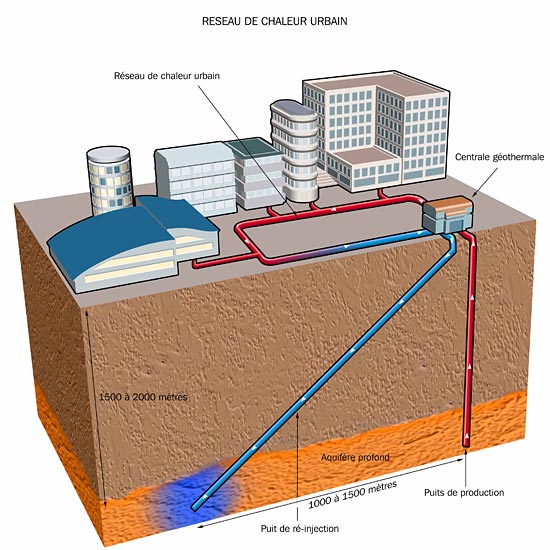September 4, 2014 – While walking my dog past a building site a few weeks ago I got into a conversation with the engineer responsible for the project – a house being built with many energy efficient features. The owners contemplated putting in a green roof but decided at the last minute to pull back from the investment. They considered solar panels and then backed away. But the materials and windows they chose were highly energy efficient.
As we talked the engineer said to me “you know they are missing a renewable source of energy that is right in their back yard.” I replied, “you mean geothermics?” His response, “exactly.” Geothermal is energy derived from the Earth’s heat. About 80% of the heat flowing to the surface comes from radioactive decay withing the mantle and crust. The most abundant heat generating isotopes are Uranium-238, Thorium-232 and Potassium-40. Although the Uranium isotope has a half-life of 4.5 billion years, roughly the age of the Earth, the latter two half half lives of 1.3 and 1.4 billion respectively. Uranium is found in the crust. The Thorium and Potassium isotopes are located in the mantle. Harvesting that heat and converting it to energy is what geothermics is all about.
Directly measuring geothermic potential is impossible without boring a hole in the ground. It doesn’t have to be a big one, just wide enough to drop sensors down to do temperature gradient measurements. But even the temperatures underground can fluctuate. So engineers have to keep continuous logs of temperature for a period of time before they decide an area shows geothermic promise.
So when I read about Schlumberger Ltd., an oil service company, boring 2 kilometer (1.3 mile) wells in the suburbs of Paris to harvest geothermal heat I was intrigued. The pilot project currently underway is scheduled to begin supplying hot water and heating to 10,000 homes around a Parisian suburb, Villejuif, in 2015.
Some 7 kilometers (4.2 miles) from the centre of Paris, Villejuif, which translates in English to mean the village of the Jews, appears to have no historical link to Jewish settlement at any time in the area. It is rather a reference to a Roman villa that may have stood in the area back in the first century AD, the Villa Judea.
It turns out that Villejuif and the entire Paris basin is a great place for low-energy geothermal projects, second only to Iceland. That’s because the sedimentary rock formations of the basin have trapped an aquifer of naturally heated water at depths between 1,500 and 2,000 meters (just under a mile to a 1.25 miles) containing water at temperatures between 55 and 85 Celsius (131 to 185 Fahrenheit) degrees.
Back in the 1980s the first attempts were made to drill wells to provide home heating but these were subsequently abandoned as France committed itself to other energy sources and in particular nuclear power. But now France has interest anew in renewables with current total energy production from all renewable sources representing 14% of the country’s total capacity.
With the European Union having set a target for all its members of 20% renewables by 2020 it means France needs to find much more energy from geothermal, wind, solar, wave and tidal power. Current levels of geothermal represent 16.5 Megawatts capacity in a total of 128,000 Megawatts generating capacity for the entire country. And geothermal is growing at an annual rate of 3%, far less than the growth exhibited by wind and solar at 21% and 53% respectively. That 3% for geothermal is the highest rate of increase in years and may signal its rebirth in the renewable mix for the country.














